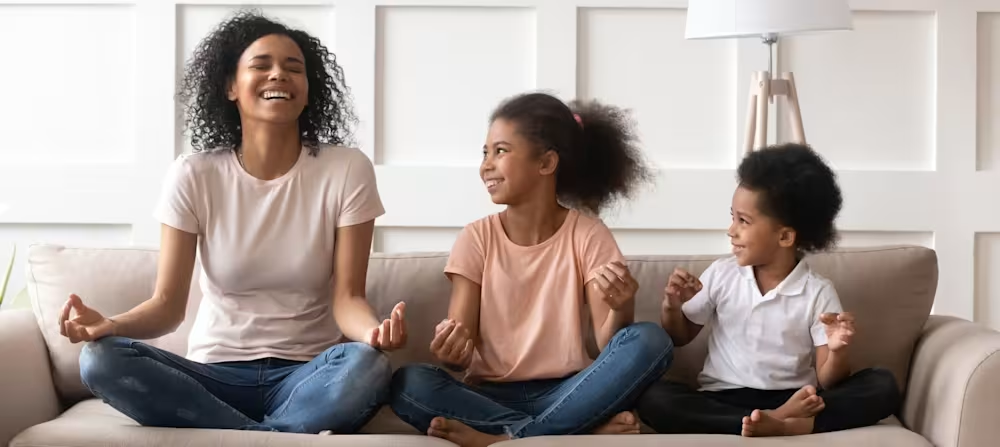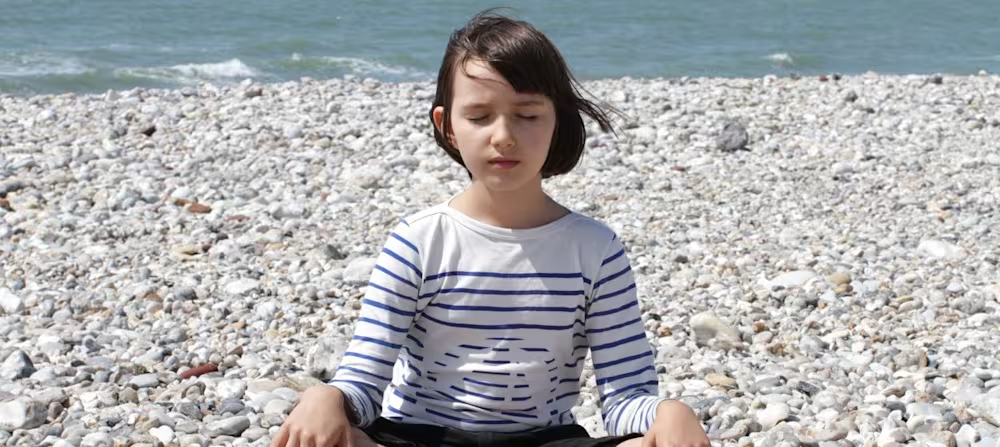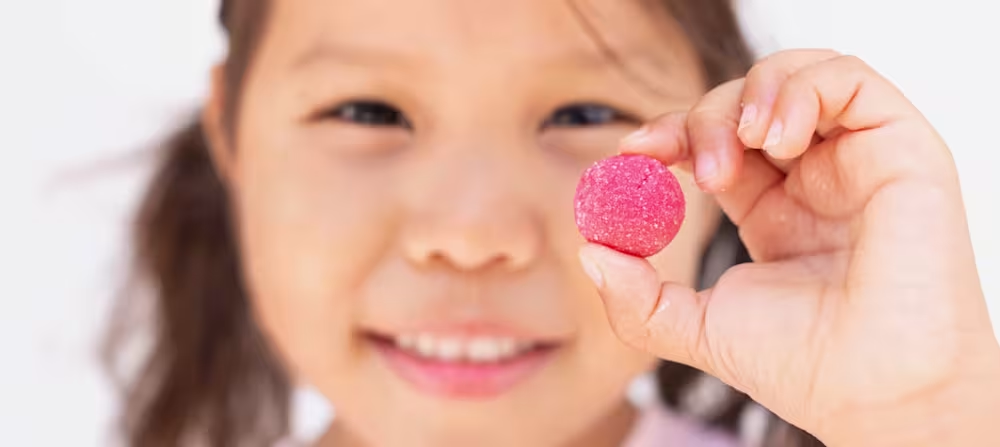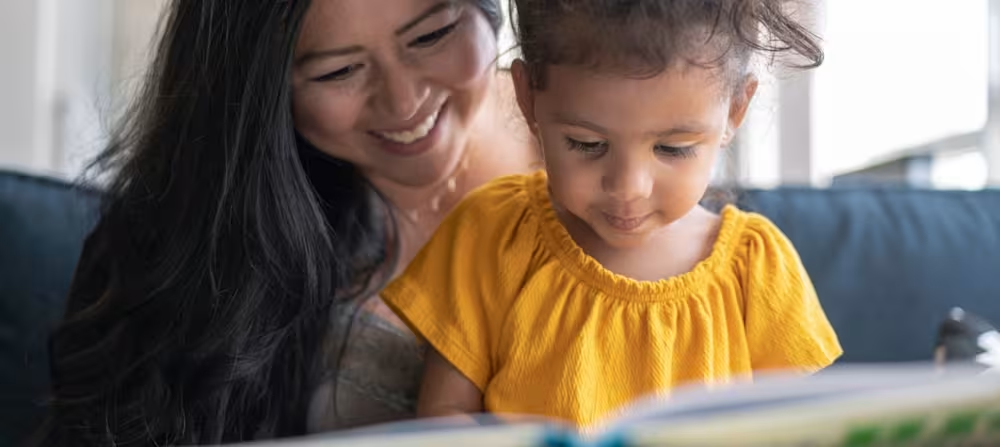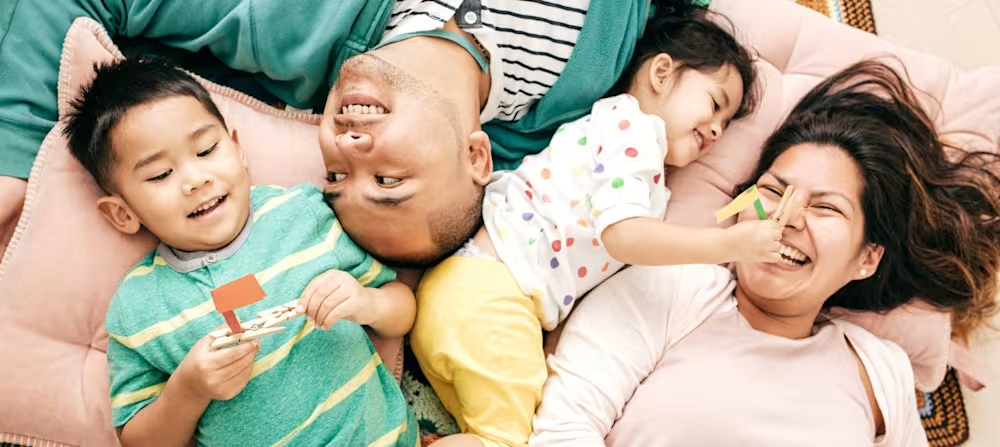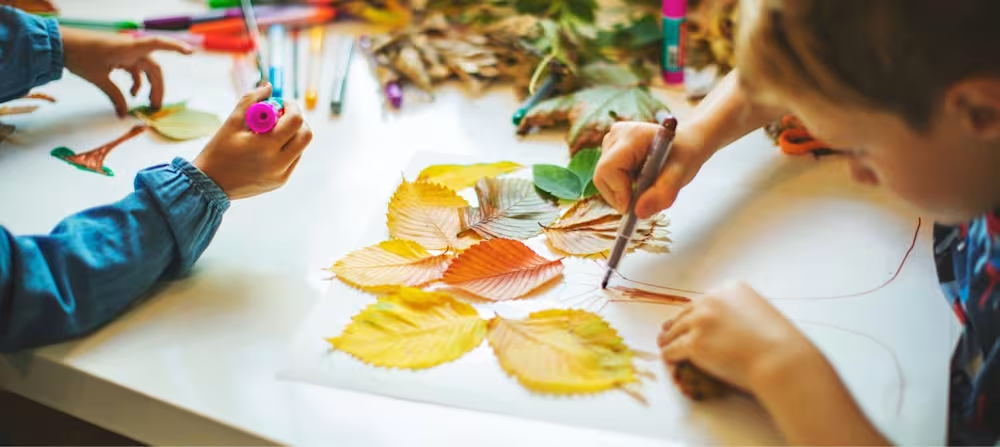Teaching gratitude: Fun thankfulness activity for children
Updated Oct 17, 2025

Gratitude is a feeling of appreciation or thankfulness. We can feel gratitude for good fortunes both big and small, and we can also feel gratitude as an overarching worldview.
Research suggests [] that gratitude has evolutionary roots, and that it is embedded in our brains, our DNA, and that it’s important in child development. Gratitude is also a virtue that we learn and grow over time, and parents can cultivate this attitude of gratitude by modeling a grateful mindset and incorporating gratitude practices into family life.
So why is fostering a thankful attitude in our children so important? Scientists have found that gratitude is positively associated with social, emotional, and psychological well-being []. Simply put, it just makes us feel better. A grateful mindset also helps us feel hopeful and motivated, even as we trudge through more challenging times.
Discuss values with your child
Children develop their values and worldview not by what you tell them, but by what you do. If they see you expressing gratitude and generosity both in the day-to-day and as a way of being, you are on your way to raising a grateful child. By talking with our children about our values, and demonstrating actions that follow suit, we can mold them into altruistic, generous, and grateful adults.
The psychologist, Dr. Robert Emmons, found that children under the age of 7 [] have a difficult time understanding the concept of gratitude. For younger children, showing them appreciation when they do something kind, generous, or helpful, modeling a grateful mindset for them, and asking them how something makes them feel will help foster their understanding of gratitude. On the other hand, ordering your child to “be grateful!” when they receive a gift isn’t going to do much.
Beyond modeling appreciation and a grateful outlook, you can use age-appropriate activities to cultivate your child’s understanding and help them integrate this positive mindset into their developing value system. When you play, connect, or create together, they’ll be more receptive!
Introduce family gratitude rituals
Teaching thankfulness is as easy as incorporating family gratitude activities into your existing routines and rituals. If you already eat dinner together or cozy up for the bedtime routine each night, your family can sprinkle in some gratitude where the connection is already happening. New habits are more easily maintained when they are stacked on top of existing ones. Our lives are so busy, so keeping it simple is ideal, so that you can genuinely savor the moments of thankfulness with your child.
You could incorporate a ritual of sharing three things you are grateful for at dinner each night. If your kids are struggling to come up with some, you can prompt them with questions such as “Who helped you feel good today? How so?” or “What’s something that makes you feel happy when you think about it?”
You could also incorporate a dose of gratitude during a walk in the woods or around the block. are excellent catalysts for thankful thinking! You could also count your blessings on the drive or walk to school or the bus stop, and give your kiddo a positivity boost to start the day.
Activities to help teach gratitude to your kids
There are countless playful and fun ways to teach gratitude. Your child will benefit from both the time spent connecting with you and the development of a grateful mindset, so it’s worth making the time.
Remember, when you’re teaching your child about gratitude, nothing they say is wrong! If they only mention materialistic things, that is A-okay. Just continue modeling gratitude for them through your own actions and enjoying activities to support your gratitude lessons - and you’ll raise a child with values just as generous and altruistic as your own.
Gratitude journaling for kids
A gratitude journal is a journal where one writes down or otherwise records what they are grateful for, the tiny things and the huge sources of thanks. What’s significant here is both developing the habit of writing down positive things and building .
A 2018 study showed [] that keeping a gratitude journal reduced materialism among adolescents and affected materialism’s impact on generosity. Given what we know about the positive impact gratitude has on well-being, starting a gratitude journal, both for yourself and your children, is a fantastic way to generate joy and a grateful mindset.
With younger toddlers and preschoolers, you can make a family gratitude journal and both contribute ideas. You can talk together about what makes you feel thankful, and then draw pictures together to illustrate each item. With little ones, one or two “gratitudes” per day is sufficient, because their attention may wander if you try to do more than that!
Gratitude journaling prompts
You may also want to offer your children prompts, rather than just directing them to write or draw something that generates gratitude. Some possible prompts include:
Think of a time when a friend/sibling/teacher did something nice for you. What was it? How did it make you feel?
Think of a time you did something nice for your friend/sibling/teacher. What was it? How did doing something nice for them make you feel? How did they feel?
What is an activity you enjoy doing by yourself?
When was the last time you said thank you?
When was the last time someone said thank you to you?
What happened today (or this week or month) that made you feel happy?
What memory makes you feel warm and cozy inside?
What are three things in your home (or bedroom or school) that you are thankful for?
What place in your community are you most thankful for? Why?
What is your favorite trip you’ve ever taken?
Gratitude crafts for kids
Crafts can be a fun and interactive way to get the gratitude juices flowing. Here are a few ideas:
Gratitude stones
Gratitude stones offer a reminder of the blessings in life and can help a child feel more connected to you in hard times or when you aren’t together.
You can either give your child a small stone or search together in nature. The stone should be small enough to fit in their pocket, and a smooth stone would be ideal, or at least not a sharp one.
If you’d like, you can paint the stones together.
While searching for the stones, painting them, or just holding them in your hands, have a conversation about all the things you can think of, tiny and big, for which you are grateful.
Then have your child put the stone in their pocket or backpack for safekeeping, and tell them they can recall something that makes them feel grateful every time they touch the stone with their fingers. Regardless of where they are or what they are experiencing, they can touch the Gratitude Stone and feel grateful!
Thankful tree
Creating a Thankful Tree is a fun family activity that fosters connection and feelings of gratitude. It also serves as a visual reminder of our blessings. You can add leaves to the tree as you experience more and more to be thankful for.
Head into the backyard or the woods to collect small tree limbs or twigs onto which you can tape or hot glue gun the paper leaves.
If you don’t want to use actual branches, you can use a tree decal or cut out a tree trunk and limbs from craft paper or wrapping paper.
If you use branches, you’ll need a container with a filler like sand, pebbles, or gems to hold the branches in place. Using a vase is a nice touch, especially if it’s going to be a Thanksgiving Dinner centerpiece!
If you go the decal, craft paper, or craft kit route, you’ll need wall space or a bulletin board.
Next, you want to draw and cut out your gratitude leaves. You can draw them yourself on construction paper or card stock, trace a leaf-shaped cookie cutter, or buy pre-cut leaves from a craft store.
If your child is old enough to draw and use scissors, be sure to include them in all the steps.
Now comes the most important step! Talk with your child(ren) about what they are thankful for and who and what they appreciate in their lives. Then help them write down each thing on an individual leaf. Younger children can draw what they are thankful for. You can do it all at once or over the course of several days, or just add a leaf whenever you feel inspired.
It’s time to adhere the leaves to the branches! If you are using real twigs and branches, you’ll want to use a hot glue gun to affix the leaves.
If your tree is on a wall or bulletin board, you can just tape the leaves to the tree.
Finally, help your child put the tree limbs into the vase, and voila! Your Thankful Tree is in full bloom.
Storytelling and books for kids
Besides being entertaining, stories foster creativity and language and allow you and your child(ren) to connect in a way where you’re experiencing the story together as equals. Children are very receptive to learning through stories so it’s an excellent tool for imparting important life lessons and values! Here are a few of our favorite books to generate conversations about thankfulness and reinforce a grateful mindset:
Acts of kindness
Sharing simple acts of kindness in your home, neighborhood, or community will help foster a feeling of connectedness, generate positive feelings, and give your child first-hand experience in how it feels good to do good. It’s also an effective way to build empathy. Here are some things you can do with your family:
Take cupcakes to the fire department
Rake your elderly neighbor’s yard
Draw or paint a picture for a loved one
Pick up trash
Do some weeding around your child’s school or favorite park
Cooking or serving a meal at the soup kitchen
Spearheading a clothing or food drive
Volunteering to walk a dog at the local shelter
Set up a lemonade or hot chocolate stand to raise money for a cause
When you’re the recipient of a spontaneous act of kindness from your child or someone else, be sure to call attention to how much you appreciate it or how good it makes you feel. The specific praise will reinforce the behavior.
Gratitude games for kids
Gratitude A-Z
You can play this game around the dinner table or in the car when you’re running errands or on a road trip. Start with the letter A and go through the alphabet, saying something you’re grateful for that begins with each letter.
Gratitude Jar
A Gratitude Jar is a container that holds your family’s “Gratitudes.”
Gather , an old oatmeal container or any other container, and paper.
Decorate the container - or just use a pretty vase.
Cut the sheet of paper into small pieces that are still big enough to write or draw on.
Every day, encourage your child to write or draw a little picture demonstrating what they are grateful for. Then they can place it in the jar and think about it or say their “thanks” out loud.
Charades, 20 Questions, or any other game with a gratitude twist
You can turn charades into a gratitude practice by performing experiences, people, places, and things for which you are grateful. Or, use the 20-question format to uncover the source of their gratitude.
With a little imagination, you can turn almost any activity into a gratitude game! What about grateful connect four or checkers? Each time you drop or move a checker, think of something you’re grateful for.
Takeaway
Research shows that a grateful mindset and regularly feeling gratitude contribute to emotional, psychological, and physical well-being. While gratitude is a prosocial trait that we’re hardwired for, it's not something that’s going to develop on its own. As parents, we can model gratitude for our children, if it's a virtue we want them to uphold.
Cultivating gratitude is an ongoing process. Kids have egos to sort through and will tend toward self-motivation and overall greediness. Just keep the attitude of gratitude in your own heart, for yourself and for them, and give them opportunities to learn to be grateful, and it will positively impact their well-being for years to come.
Gratitude FAQs
Share article:
Note: The content on this site is for informational purposes only and should not replace medical advice from your doctor, pediatrician, or medical professional. If you have questions or concerns, you should contact a medical professional.
4 Sources
Share article:
